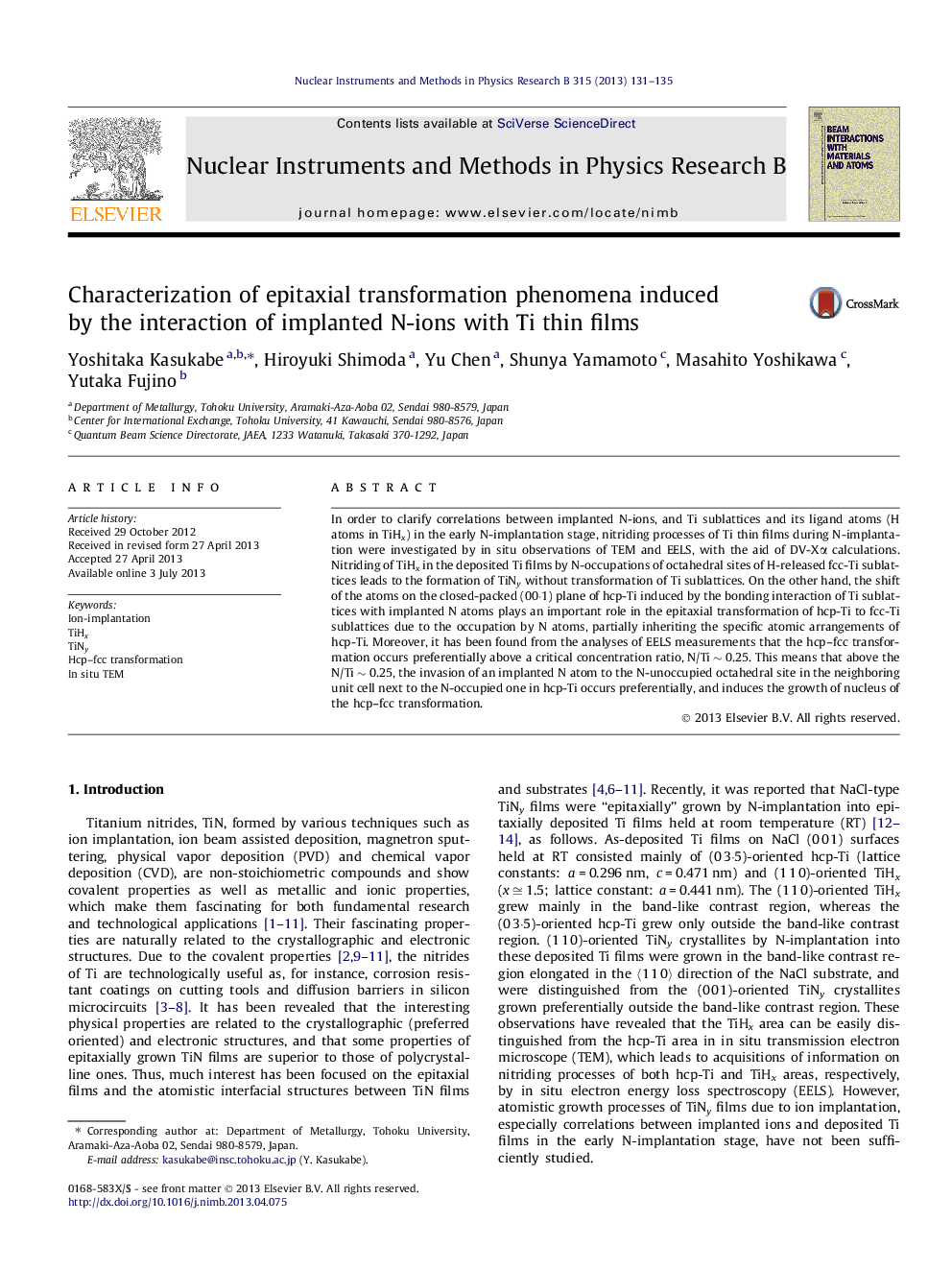| Article ID | Journal | Published Year | Pages | File Type |
|---|---|---|---|---|
| 8042254 | Nuclear Instruments and Methods in Physics Research Section B: Beam Interactions with Materials and Atoms | 2013 | 5 Pages |
Abstract
In order to clarify correlations between implanted N-ions, and Ti sublattices and its ligand atoms (H atoms in TiHx) in the early N-implantation stage, nitriding processes of Ti thin films during N-implantation were investigated by in situ observations of TEM and EELS, with the aid of DV-Xα calculations. Nitriding of TiHx in the deposited Ti films by N-occupations of octahedral sites of H-released fcc-Ti sublattices leads to the formation of TiNy without transformation of Ti sublattices. On the other hand, the shift of the atoms on the closed-packed (00·1) plane of hcp-Ti induced by the bonding interaction of Ti sublattices with implanted N atoms plays an important role in the epitaxial transformation of hcp-Ti to fcc-Ti sublattices due to the occupation by N atoms, partially inheriting the specific atomic arrangements of hcp-Ti. Moreover, it has been found from the analyses of EELS measurements that the hcp-fcc transformation occurs preferentially above a critical concentration ratio, N/Ti â¼Â 0.25. This means that above the N/Ti â¼Â 0.25, the invasion of an implanted N atom to the N-unoccupied octahedral site in the neighboring unit cell next to the N-occupied one in hcp-Ti occurs preferentially, and induces the growth of nucleus of the hcp-fcc transformation.
Keywords
Related Topics
Physical Sciences and Engineering
Materials Science
Surfaces, Coatings and Films
Authors
Yoshitaka Kasukabe, Hiroyuki Shimoda, Yu Chen, Shunya Yamamoto, Masahito Yoshikawa, Yutaka Fujino,
